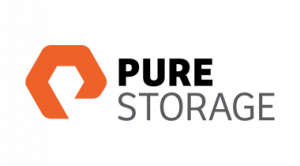Legacy storage technology can be such a drag. It can be a drag on the performance of your overall IT environment, and on the efficiency and sustainability of that environment.
Matthew Alexander, Field Solutions Architect with Pure Storage, learned that firsthand when he was a systems administrator/architect with a government agency.
The agency shifted to flash-based systems from Pure Storage. Flash storage has no moving parts, so it is faster and requires less energy. Flash also is much denser, storing the same volume of data in a smaller system. All told, a flash-based system uses 90% to 97% less electricity to store the same amount of bytes.
For Alexander’s agency, it was a revelation.
“It’s interesting that when we incorporated flash storage in our environment, we didn’t realize how much our previous storage platform was negatively impacting the performance and the availability of our environment, and … how much operational complexity we had,” Alexander said.
The Value of Simplicity
Complexity is a common problem for agencies with older technology. In many cases, for example, they manage multiple storage systems, each for a different type of storage format — e.g., block, virtual machine, file or object. Each format has benefits, but it can be a bear to manage all those individual systems and the interfaces involved.
That’s why Pure Storage offers an integrated data platform with an operating system called Purity that manages that complexity.
Another challenge is that agencies have integrated their compute, network and storage systems. That architecture requires an agency to scale up all three technology stacks in lockstep. But that can be a waste of money. For example, you might need more storage but can work with the existing compute and networking capacity.
“Being able to scale granularly where you need it can help with budgets,” Alexander said.
The Weight of Technical Debt
Another common problem is what’s known as technical debt. Rather than investing money in new technology, an agency keeps investing in the legacy tech, scraping by as long as they can.
Agencies need a storage solution that evolves as requirements evolve, Alexander said.
“It needs to be able to support the agency’s needs today and fit within their current technology architecture, but not hinder their ability to move to the architecture that they will need in the future,” he said.
That’s the idea behind Pure Storage’s Evergreen program. Through this program, an agency can purchase a storage platform today, and Pure Storage will keep the hardware up to date over time and add new software features as they become available. And unlike when buying a whole new system, there’s no need to spend money on data migrations.
In short, by simplifying the IT environment and reducing technical debt, an agency can focus on “getting value from the data rather than managing the hardware on top of which it runs,” Alexander said.
This article appears in our guide, “Decision Intelligence: New Possibilities for Data-Based Decision-Making.” For more about how agencies are using data in practical ways, download the guide here:






Leave a Reply
You must be logged in to post a comment.